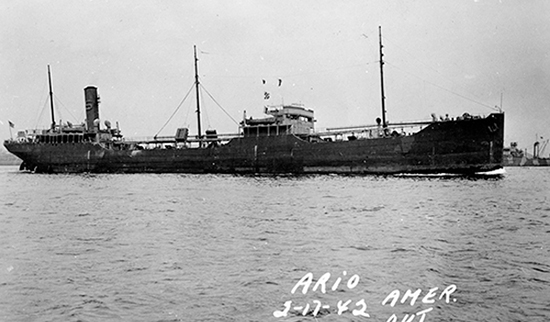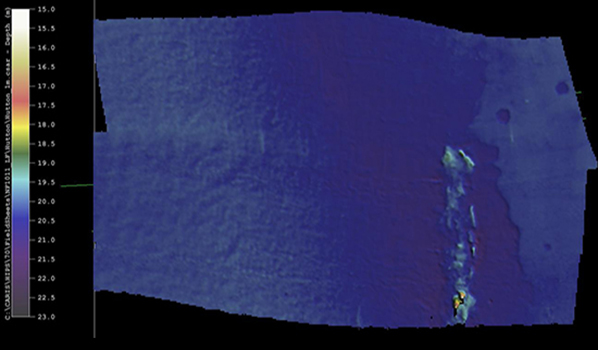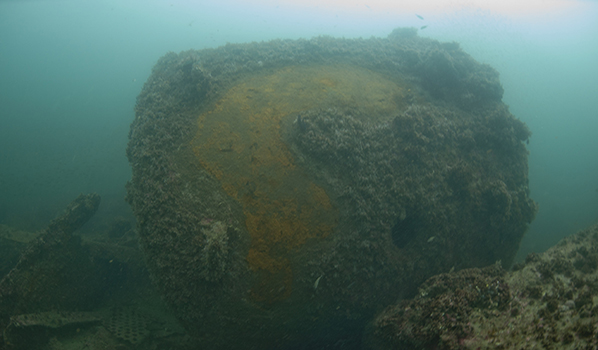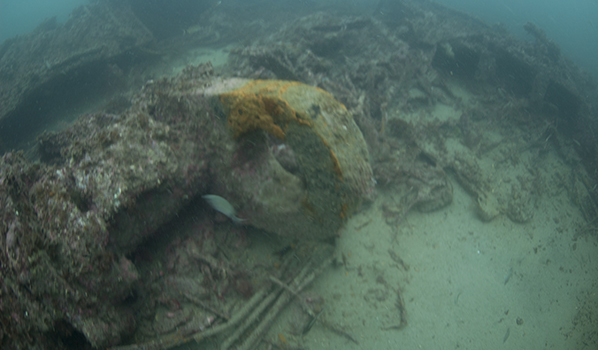Ario
Ship Stats
Location: 34°29'56.31"N, 76°53'52.23"W (34.49897, -76.89784)
Depth: 70 feet
Vessel Type: Tanker
Length: 436 feet Breadth: 56.1 feet
Gross Tonnage: 6,952 Cargo: Ballast
Built: 1920, Bethlehem Shipbuilding Corporation, Sparrow's Point, Maryland, USA
Hull Number: Unknown Port of Registry: New York, New York, USA
Owner: Socony-Vacuum Oil Co. Inc., New York, USA
Lloyd's Register Details: Two steel decks, web frames, longitudinal framing, triple expansion engine
Former Names: N/A
Date Lost: March 15, 1942
Sunk By: U-158 Survivors: 30 of 38 survived (8 dead (5 from initial attack and 3 shortly after))
Data Collected on Site: Still and video photography; high resolution multibeam
Significance: Casualty of World War II's Battle of the Atlantic
Wreck Site
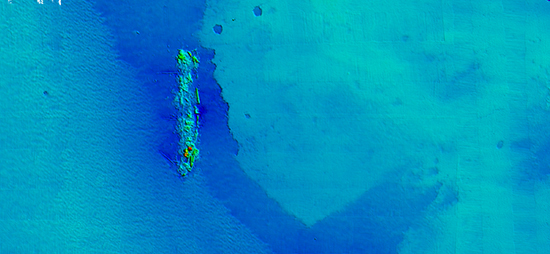
The remains of the site believed to be Ario are located inshore in relatively shallow waters, approximately 60 feet deep. Due to its location, the site is very broken apart due to the post-war efforts to clear navigable areas by dynamiting and wire-dragging sunken vessel remains considered navigational hazards. Additionally, being close to shore and with shifting sands, visibility at the site varies.
For the purpose of identifying the remains of this site, research (utilizing field operations data from our expeditions, archival information as well as public input) has led NOAA to conclude that this shipwreck is Ario. We believe confusion regarding the identification of Ario stems from a combination of initial reporting of vessel locations during the height of U-boat attacks, the number of vessels lost in the area, as well as resources diverted to the salvage of the still floating Olean that had been attacked by the same U-boat as Ario, U-158. This type of confusion is understandable with a large number of shipwrecks so close together and the "fog of war" effect.
Additionally, since 2008, with the assistance of local divers and avocational researchers, NOAA has determined that other initially reported shipwreck identities were incorrect and has been working to clarify their identities. Working with our partners, sites that had been identified as Mirlo, Papoose, W.E. Hutton, and San Delfino have now been more accurately identified as San Delfino, W.E. Hutton, Ario, and Papoose respectively (once believed Mirlo is in fact San Delfino; site of believed Papoose is actually W.E. Hutton; site of W.E. Hutton is Ario; and the site of believed San Delfino is actually Papoose).
NOAA continues to welcome information and data that can assist and strengthen ship histories, identification and personal stories.
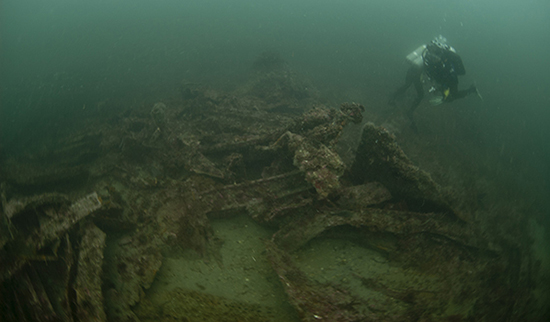
Historical Background
Ario was a tanker built in 1920 by Bethlehem Fairfield Shipbuilding Corporation. It was owned and operated by the Socony-Vacuum Oil Company out of New York. During the war, Ario continued to operate on a course through the Gulf of Mexico and up the East Coast. On March 15, 1942, Ario was traveling 11 miles southwest of Cape Lookout, North Carolina. The ship was unarmed and alone, when U-158 sent a torpedo that struck Ario on the starboard side. Fortunately, Ario managed to send a radio distress signal confirming the attack.
Ario's crew was ordered to abandon ship, but before any of the boats could be launched, U-158, captained by Erwin Rostin, surfaced and opened fire on the vessel. For 30 minutes U-158 fired upon the ship. During that time, the crew of eight officers and 26 crewmen tried to abandon the ship, but one of the lifeboats containing 12 men was struck before it reached the water, killing five men. Three other men later died of injuries sustained during the attack. After the attack, U-158 closed in on Ario to view the vessel and almost collided with a lifeboat before leaving the area. Once U-158 left the area, the master, chief mate, second mate, chief engineer and an able seaman re-boarded Ario to check for possible salvage. Unfortunately, the vessel was sinking, so once again they abandoned ship. After seven hours in the water, the survivors were picked up by USS Du Pont (DD-152) and landed at Charleston, South Carolina.
